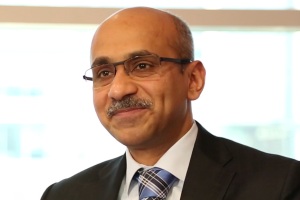Building change in the construction industry

Upendra Dharmadhikary, vice president atTech Mahindra
The IoT era looks set to bring significant changes to industries which have, typically, been slower to embrace disruptive technologies. One such sector is construction, in which IoT technologies have the potential to not only improve efficiencies at key stages of the design and build of structures,but also to bring changes to the safety and security of construction sites.
The UK construction industry accounts for £102 billion(US$ 122.72 billion) in economic output, yet faces severe challenges. The outlook has been uncertain post Brexit and recent reports reveal that construction output has remained flat for the past year. There are, however, some positive signs: most recently the Government announced a £2.3bn(US$ 2.77 billion) Housing Infrastructure Fund, says Upendra Dharmadhikary, vice president at Tech Mahindra.
At a time when it’s more important than ever for the industry to look for new ways to streamline processes and manage change more effectively, advancements in IoT could provide solutions to issues which have hampered construction projects. Whilst upfront investment is needed, these latest technologies could, in the long run, provide better and more cost-effective ways of working. Key areas in which the IoT can deliver change include:
Planning and design validation
Between planning and execution, projects can alter dramatically. The added complications of co-ordinating multi-party projects involving different work streams means that projects can overrun and costs can escalate.
Harnessing data from IoT sensors can deliver vital information at key stages of the design and build process to reduce delays. Problems can be solved faster and changes can be managed more effectively.
In the future, these sensors could help to create 3D models of buildings , providing a ‘virtual’ replication so that designers and architects can test key aspects of the design before construction. IoT sensors can provide data points throughout the construction lifecycle, providing real-time insights on projects so that adjustments can be made based on the most accurate information.
In this way, designers and architects can test and validate key aspects of the design as part of the Building Information Modelling (BIM) process. Sensors and robots can dramatically increase the productivity of construction firms.
For example, it can help designers to know exactly where heating and air conditioning should be positioned to optimise airflow or where lights should be fitted that best suits the requirements of the building. Designers can check aspects such as the impact of occupancy and footfall within a building from information provided by sensors.
Creating a digital view of a building, with information from sensors means that decisions are based on real-time, real-world data, speeding up completion time and reducing costs.
Safety, security and maintenance
The construction sector has one of the highest rates of accidents and injury, with 2.2 million days working days lost to work-related injury or illness. However IoT innovations – a ‘connected’ building site and ‘connected’ staff – can provide a route to safer ways of working. For example, wearables, such as hard hats fitted with sensors, can monitor the health of the worker, detect if any hazards are nearby, or simply provide an alert if someone is not wearing a helmet.
Sensors can also help us to understand more about how workers are interacting with machinery to reduce the risk of injury or musculoskeletal disorders. They can be used to prevent collisions with vehicles working on site; proximity sensors can alert drivers of potential dangers and avoid accidents.
With maintenance and repairs a huge cost factor in construction, IoT can help to reduce unnecessary outlay as machines fitted with advanced sensors will predict and detect the need for repairs early on, before it becomes too costly. The use of augmented reality and robots can help workers in carrying out maintenance tasks.
There are further benefits from the IoT era in improving on-site security. Most construction sites typically have millions of pounds worth of assets, which makes them a target for thieves or vandals.
Here, too, the IoT can make a difference and protect against loss, theft or vandalism damage.
Tags on tools or machinery can provide alerts to remotely alert site managers if these assets go missing. Drones fitted with security cameras can track construction sites at night, remotely managing them and providing ‘eyes’ on a site, which offers more coverage than static CCTV cameras.
We’re still some way off from these practices becoming the norm. However, if the industry harnesses the latest innovations in IoT, the construction sector of the future could be a very different place. In future, the convergence of Operational Technology (OT), controlling physical devices, and IT will bring further disruption in the construction industry.
The good news is that we’re seeing more advancements in the computing power of sensors and the networking of the devices themselves is becoming cheaper. ‘Smart’ construction sites, sensors and connected devices can drive new, more efficient and safer ways of working.
The author of this blog is Upendra Dharmadhikary, vice president at Tech Mahindra
Comment on this article below or via Twitter @IoTGN
